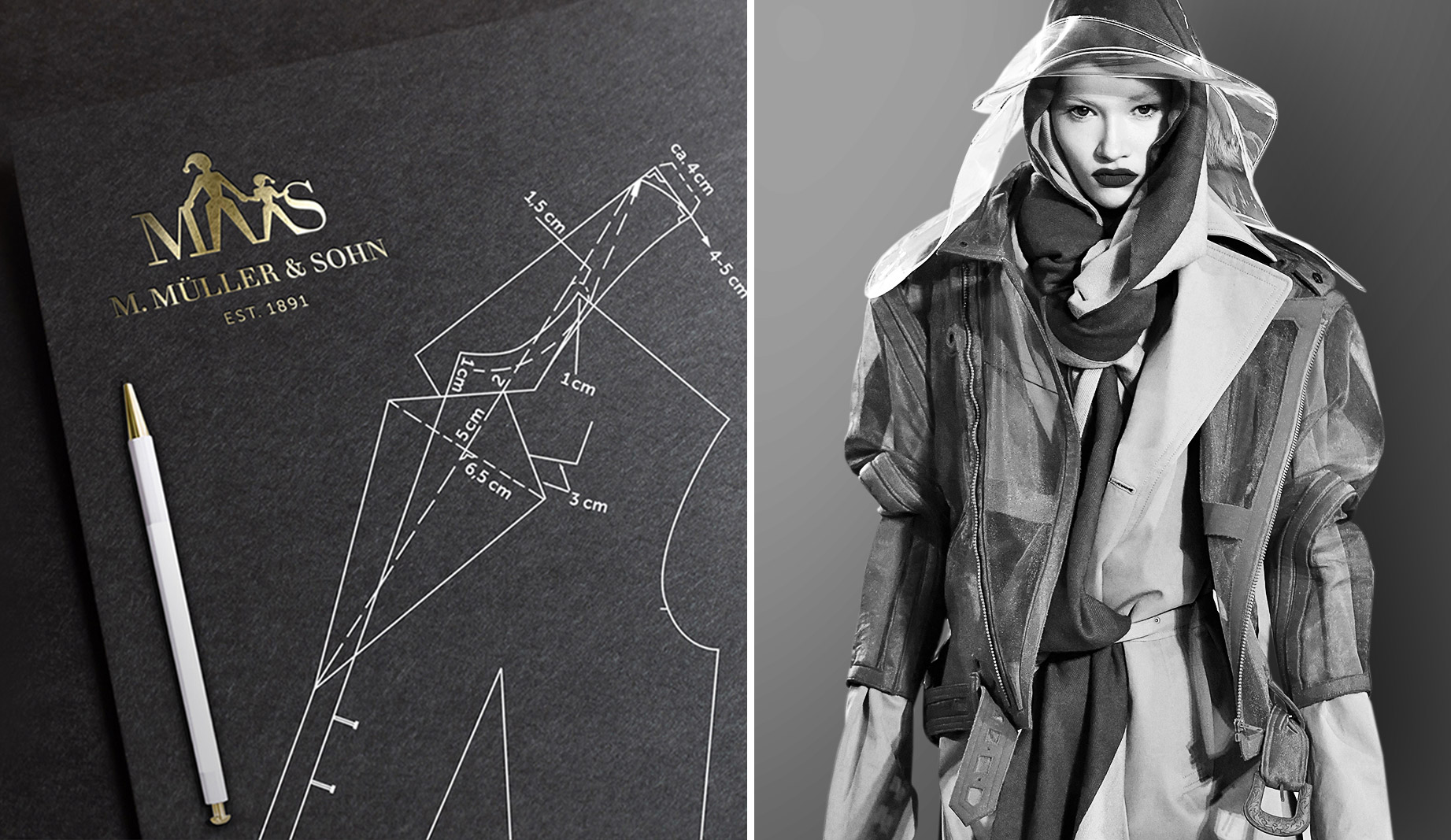About us
Deutsch
Since 1891 – The Cutting System of Generations
While trends may come up, evolve and vanish again, a perfect fit will never go out of style.
Being driven by high-end tailoring, the Munich-based founding company of today’s »Rundschau Verlag Otto G. Königer GmbH & Co.KG« was successfully led through various decades. Two family dynasties stood at the top of the traditional business. The path of founder Michael Müller and his successor Otto Georg Königer and family is characterized by hard work, new ideas, numerous projects and many successes, but also by crises. The private educational institute for fashion and cutting technique, together with its affiliated specialist publishers, represented a time frame of fashion and patternmaking history.
Trends and temporary fashion of all kinds are in rapid change. But what would the valid, stylistic form of a garment be without its impeccable fit?
Specializing on cutting technique and pass-proof processing, the technical school »M.Müller & Sohn« has always stood out from other fashion or master schools. In addition, the cutting system developed by Michael Müller was a revolutionary step in the field of cutting at that time and able to gain and maintain international acceptance. Cutting by proportional calculation is easy to learn, captures the most diverse body deviations accurately and is time-saving as well as easy to use. The so-called »Müller-System« ensured the clothing industries masterful processing possibilities. It is delightful that a traditional company such as »M. Müller & Sohn« has been successful for decades, especially in this fast-moving age we live in.
The company today
Today, the more than 100-year-old traditional company publishes specialist books, unique patterns as well as eBooks providing a wide variety of professional and technical information. In addition, the specialist magazine »M. Müller & Sohn« is published six times per year. The internationally recognized and acclaimed fashion magazine for tailors, designers and the industry features current ladies’ and men’s fashion trends, model illustrations, specialist technology with cut designs and the included pattern sheets. The magazine also provides information on important fashion events, the market situation and latest news from the trade associations.
Independent of the publishing house, the cutting school Müller & Sohn with its headquarters in Düsseldorf also continues to exist.
Fashion is always of interest – for the whole world and at all times. Especially when the various materials follow their fit like a »second skin«.
Team
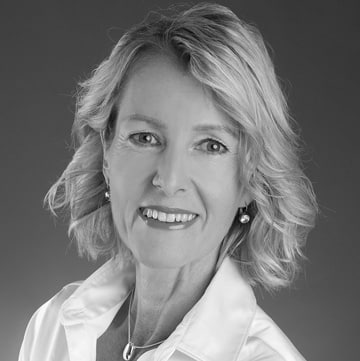
Carola Frommer
Project Management / Media Sales
studied business administration in Heidenheim and has been working passionately for M. Müller & Sohn since 1998. She is responsible for the entire Media Sales department and is the brand’s property manager. When she is not working on communication campaigns with our customers or in a team meeting, she can be found on the tennis court or on a tour in the mountains.
As property manager, she has overall responsibility for the publishing house.
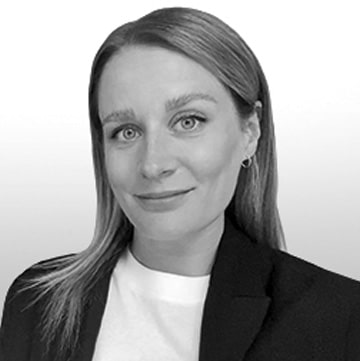
Jasmin Clausen
Editor-in-Chief / Headmistress
completed a three-year apprenticeship as a bespoke tailor with subsequent further training as a cutting and production director at AMD Hamburg. Since 2018, she has been responsible for the entire cutting technology of the publishing house. Jasmin Clausen has been editor-in-chief of the trade magazine ‘M. Müller & Sohn’ since April 2020. Since January 2023, she has also taken over the management of the M. Müller & Sohn technical college at the new Hamburg site.
This means she is responsible for both print and online content.
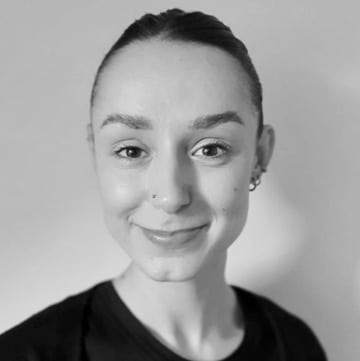
Janika Khammar
Pattern Director
After her three-year training as a bespoke tailor and fashion designer, she completed further training as a cutting and production director at AMD Hamburg. She has been working as a pattern director for M. Müller & Sohn since September 2020.
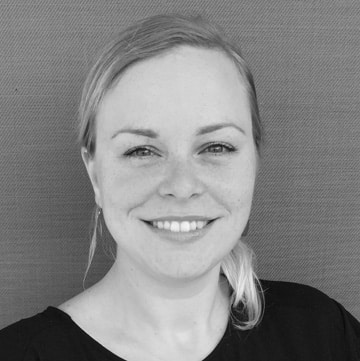
Lilith-Fynn Beckmann
Content Editor
has been working as an editor for ‘M. Müller & Sohn’ since 2012. As a content editor, she is involved in the editorial production of the magazine and is also responsible for the online publications on the website. Since October 2022, she has also been in charge of M. Müller & Sohn’s social media channels. Lilith-Fynn Beckmann completed three years of training as a communication designer (specialising in fashion) and one year of further training as a model maker in fashion design at the Städtische Berufsfachschule für Mode-Kommunikationsdesign in Munich.
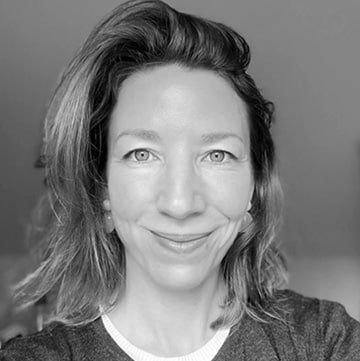
Veronika Krause
Content Creator
graduated in 2008 with a degree in fashion design from the HTW in Berlin and then gained many years of experience as a women’s wear and textile designer in the fashion industry. She also completed further training as a pattern and production director at the AMD in Hamburg.
She joined the M.Müller & Sohn team in 2019 and develops content for the professional magazine M.Müller& Sohn.
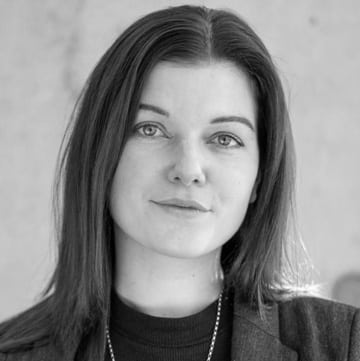 Laura Kühn
Laura Kühn
Business Development
studied Media Management (M.A.), specialising in Digital Media and Marketing. As Business Development Manager at M. Müller & Sohn University of Applied Sciences, she is responsible for collaboration with cooperation partners and creates a target group-specific range of information about the university’s further education opportunities.
A particular focus of her work is the further development of digital offerings in order to make our educational programme future-oriented and accessible.
.
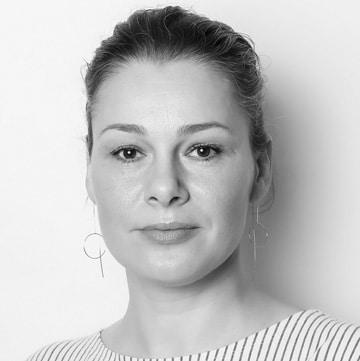
Ute Picha
Specialist Lecturer
has been a permanent lecturer at M. Müller & Sohn Fachschule since it opened in January 2023. After training as a men’s tailor and gaining several years of professional experience at a fashion label, she trained as a cutting and production director at JAK Hamburg in 2007. She then spent 13 years realising the costume designs for the show ensemble of a cruise company. At the college she teaches courses in pattern development and the grading of ladies’ and men’s patterns, and also leads the four-week seminar CAD – Digital Pattern Construction with Grafis Version 23.
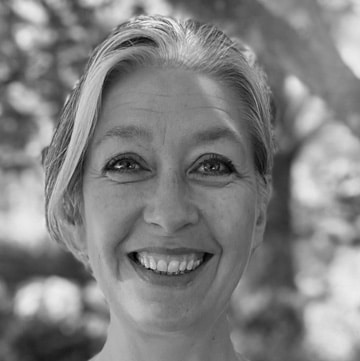
Alexandra Sedelky
Specialist Lecturer
trained as a dressmaker and retail saleswoman between 1985 and 1991. In 1996, she successfully completed further training as a cutting and production director at AMD Hamburg. In 1997, together with others, she founded the creative shop project ‘Die Kleidermacher’. Alexandra Sedelky has been working as a freelance pattern maker since 1996 and enjoys the wide range of tasks and contacts that this wonderful profession entails. In addition to creating initial cuts, this also includes providing advice on processing and fit.
From 2001 to the present day, she has worked as a lecturer for pattern construction at AMD Hamburg on the fashion design degree programme and on the pattern and production director course. Since 2023, she has been teaching the construction of women’s patterns at the Hamburg location of the M. Müller & Sohn technical college.
In addition, we collaborate with over 25 international freelance authors who constantly provide us with latest varied and informational content straight from the fashion Industry.
What is a cutting/patternmaking system?
A patternmaking system serves to correlate the numerical values obtained during measurement, which correspond to the circumference and the longitudinal extent of the human body in a way that the body surface is reconstructed in a plan-based manner from these measurements. This results in the cut parts of the individual, different types of garments, which must be considered in addition to the perfect fit and the respective fashion style.
»We have always felt the urge to get to the bottom of patternmaking and it is ever-present due to our demanding clientele.« – Michael Müller, 1893
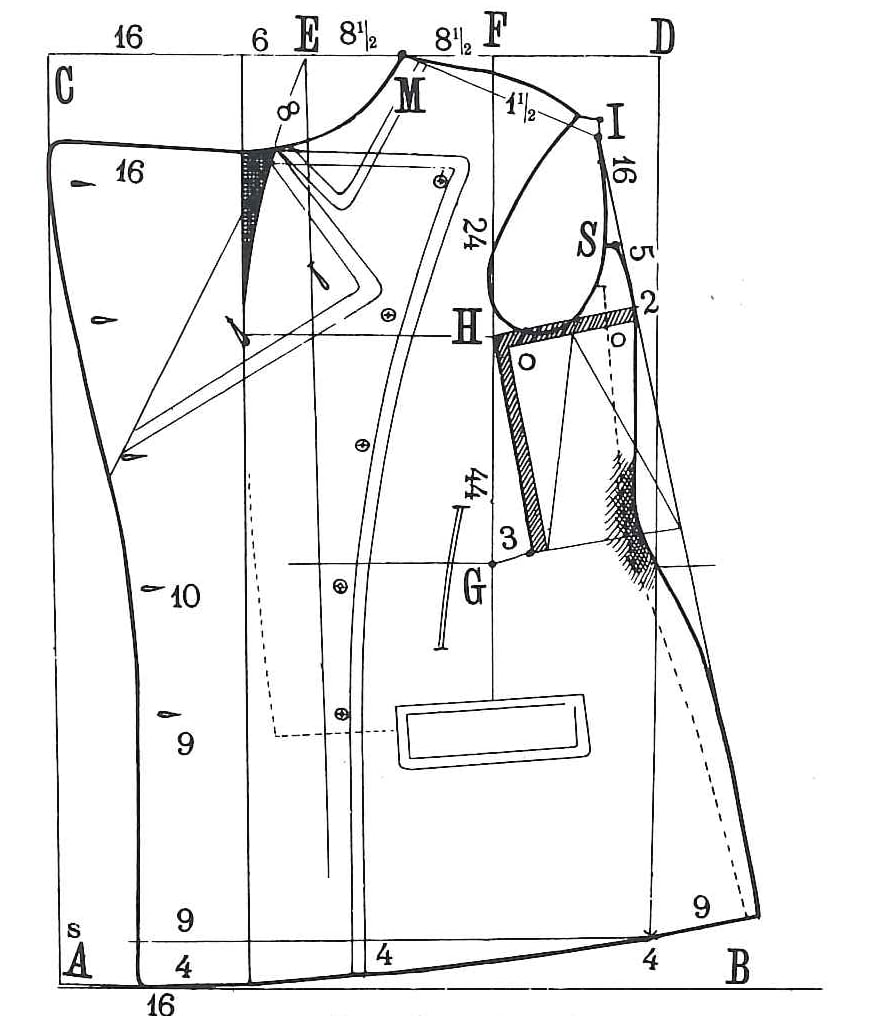
Original Pattern of a Jacket by Michael Müller (Figur 47)
The M.MÜLLER & SOHN company
2019
- In the course of a company merger the Rundschau publishing house becomes a part of the Ebner Media Group GmbH & Co. KG
2018
- Personnel changes at the Rundschau publishing house (see Team above):
Tina Kühner becomes Object Manager // Tatjana Weilert takes her position as Editor-in-Chief // Jasmin Clausen becomes Head of the Cutting Department - Digital expansion of the Rundschau publishing house: Website, Social media channels, new digital products and subscription concepts
2008
- Mag. Gerrit Klein becomes Managing Director of Ebner-Verlag and Rundschau-Verlag
90’s
- 1990: As sole proprietor Sophie Königer sells the majority of the company to the Verlagsgruppe Ebner Ulm
- 1991: Dr. med. Hans Keller becomes Editor-in-Chief, Heinz Nitschke becomes Managing Director
- 1992: Herbert Schön becomes Managing Director
- 1995: Frank Sellien takes his position as Managing Director
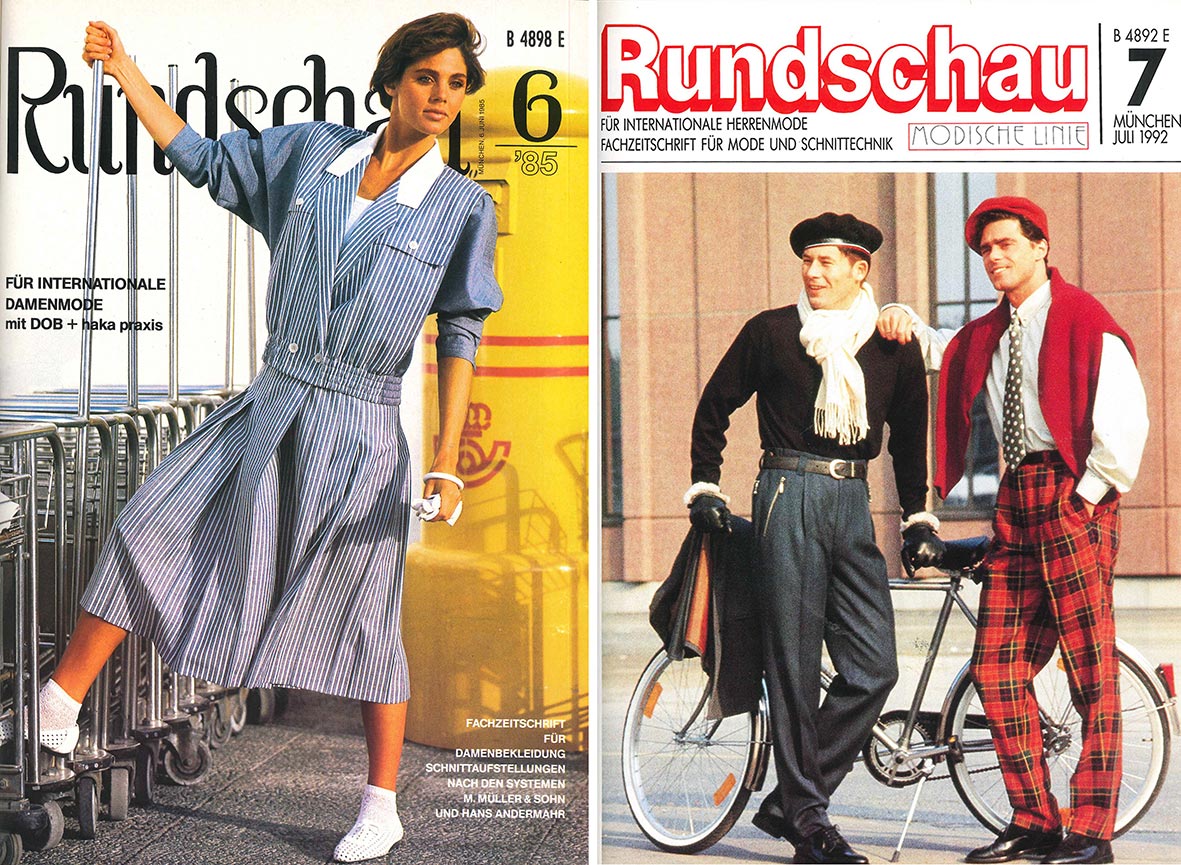
Rundschau covers from 1985 and 1992
80’s
- Short-lived trends begin to dominate the fashion scene
- Erwin Königer dies, daughter Sophie Königer takes over Management
70’s
- As of 1972: Jeans / Denim flood the clothing sector, while the interest in couture and clothing decreases
- Erwin Königer becomes Managing Director, his son Rasso Königer takes over Editor-in-Chief
60’s
- »Müller & Sohn« serves as the largest educational institution for the tailoring industry in Europe
- Women’s fashion: mini dresses and trouser suits showcase the of equality of women
- Men’s fashion: casual and with Italian influence, sporty jackets
- Haute Couture has to give up its exclusivity and start making a connection with the textile industry
- Due to the increasing demand for finished clothes, competition within the clothing sector is getting tougher
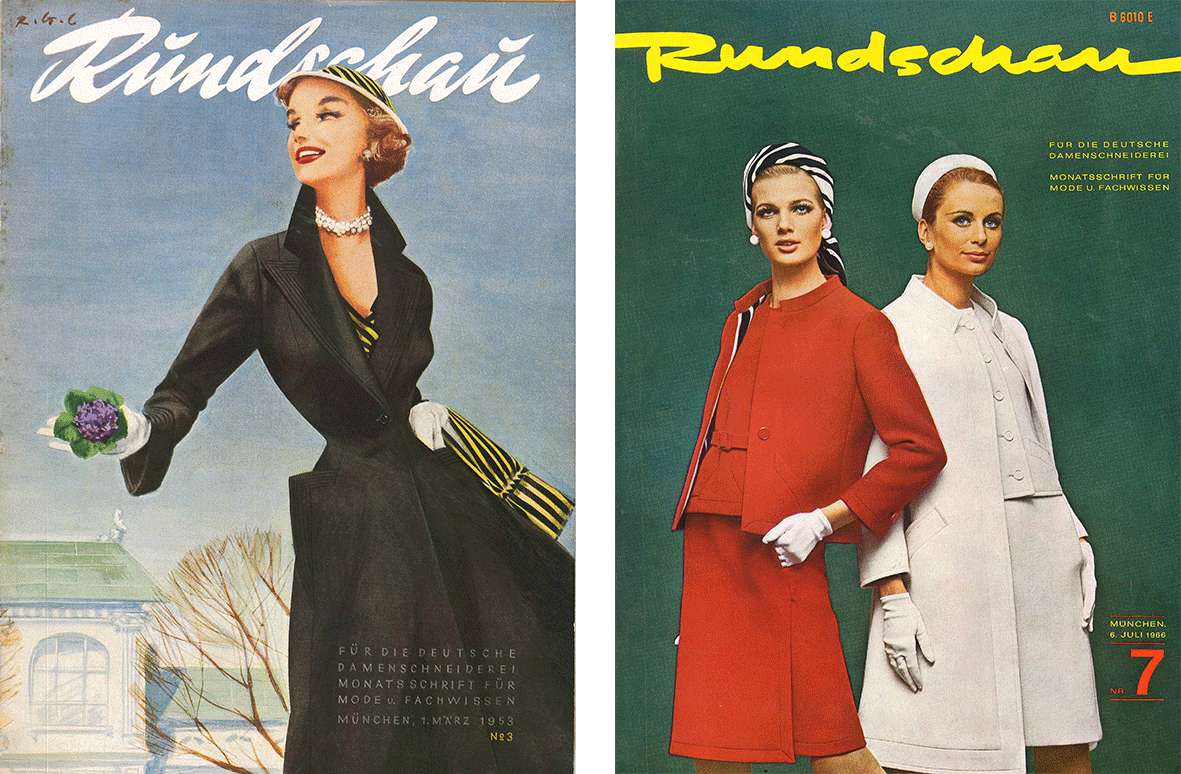
Magazine covers from 1953 and 1966
50’s
- Women’s fashion: directors and modellers are using a wide variety of clothing silhouettes
- Men’s fashion: trend to well-groomed clothing
- As the textile industry adapts to the buyer group teenagers and twens, Müller & Sohn sets up a special department for so-called young fashion
- The »Müller system« becomes indispensable for many master and fashion schools
- The tailoring industry needs an efficient cutting system in line with the new requirements in fashion and processing technology
- Friedrich Nieder-Eichholz (specialist teacher of the cutting school) significantly develops the Müller system even further by setting up a practicable, time-saving grading system

Friedrich Nieder-Eichholz at work
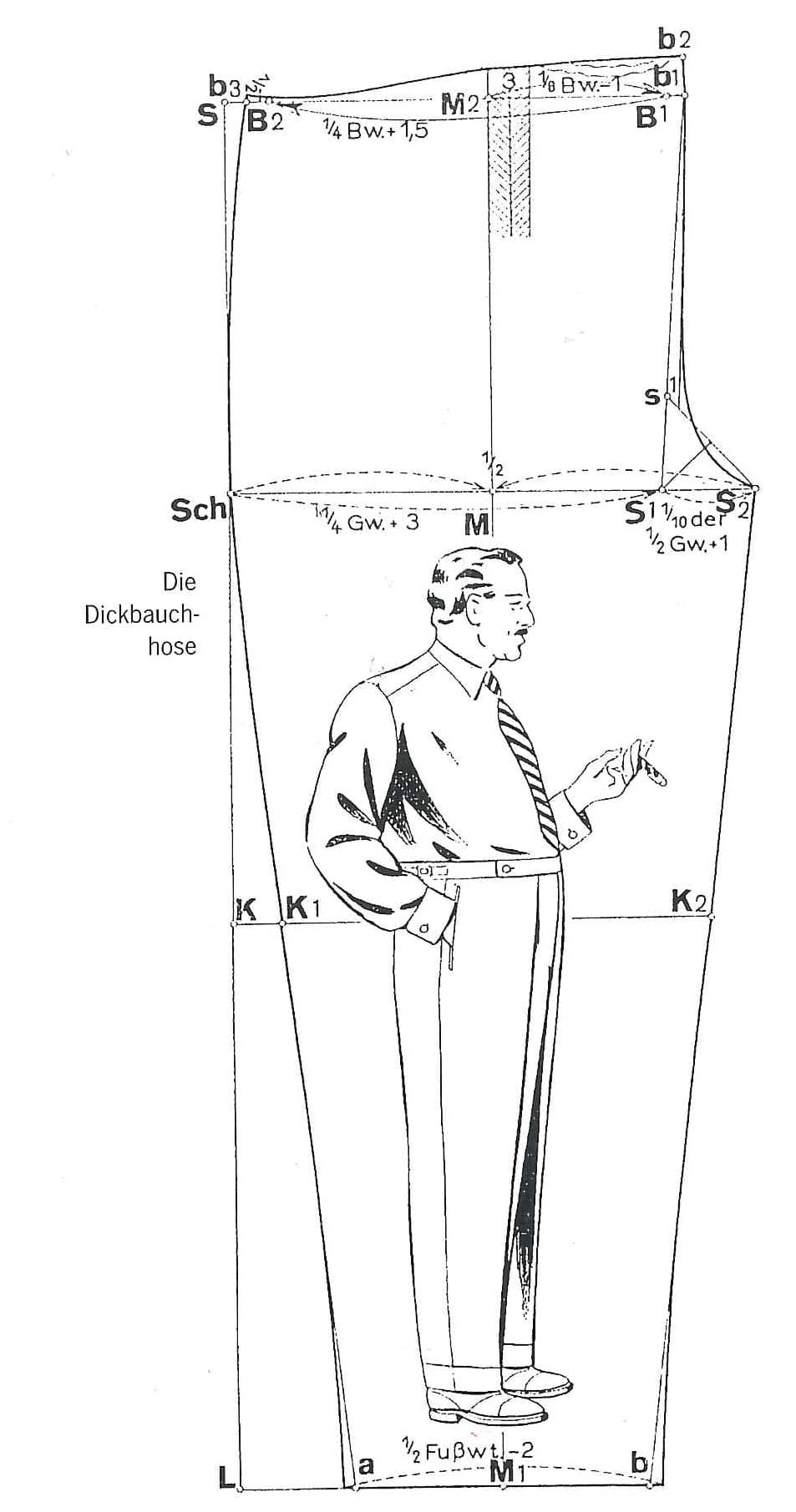
Pattern construction of the so-called Dickbauch-Hose from 1950
40’s
- The company was able to overcome World War II without severe financial losses due to the prudent management of Otto G. Königer
- Currency Reform of 1948: the Königer company starts to rise again
30’s
- As technical conditions of large-scale production become dominant, the number of trainee tailors decreases drastically due to the increasing industrialization.
- Initial publications of the in-house specialized books and magazines »Rundschau – Deutsches Schneiderfachblatt für die Herrenschneiderhandwerk« (Rundschau for Men’s Wear) and the »Rundschau für die deutsche Damenschneiderei« (Rundschau for Women’s Wear)
- 1930: First photographic fashion pictures are published
- 1933: Otto Georg Königer takes over the German Clothing Academy, the school and the Rundschau publishing house
- When Franz Xaver Mueller dies in 1937, the Königer family continues the Müller dynasty under the old company name
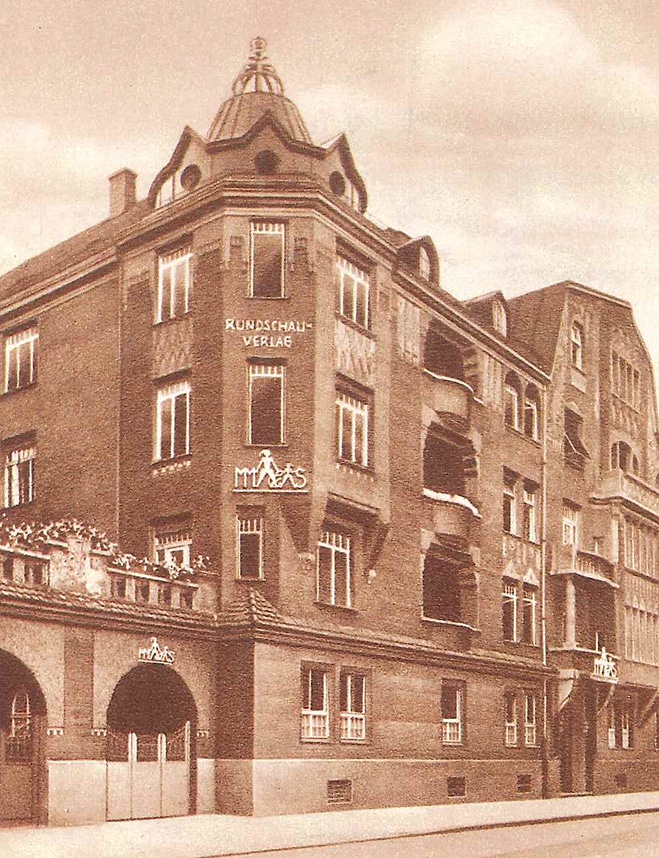
Rundschau Publishing House and School, Munich
20s
- Sports fashion gains in importance, even Haute Couture borrows role models form comfortable clothing and fits of the working class
- Women’s skirts shorten and reveal a part of the leg – a revolution!
Early 20th century
- Director Müller’s son Franz Xaver (master tailor) joins the family business
- The business flourishes during the characteristic luxury turn of the century
- 1902 Printing house is connected to publisher and cutting school
- 1911: The brothers Müller acquire their own building
- 1914: Michael Müller dies. Otto G. Königer ist constantly updated by specialists from the school, textbooks and the working instructions in men’s and women’s fashion to bring out the latest in fashion and technology
- 1918: A revolutionary turning point in fashion.The male youth is against a uniform-like style. Knickerbocker, blazer and trench coat become part of everyday clothing
- In addition to the branches in Düsseldorf, Hamburg, Hanover, Berlin, Frankfurt and Stuttgart, Otto G. Königer also establishes further branches in Vienna and Barcelona.
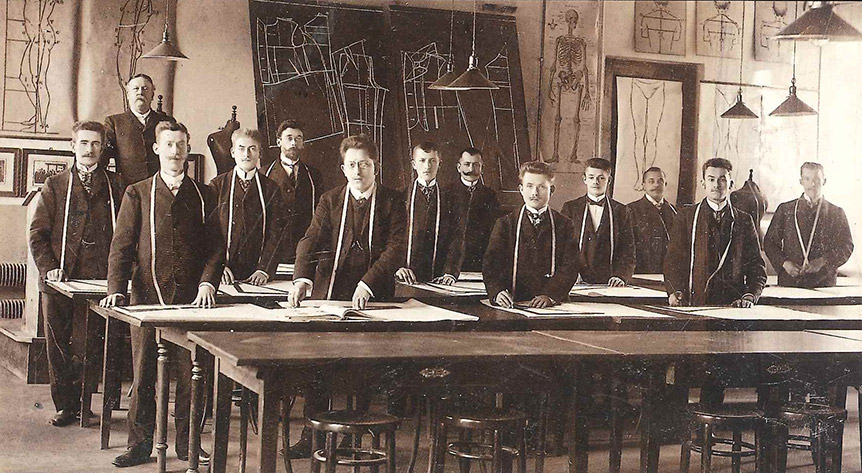
Deutsche Bekleidungs-Akademie München, 1904
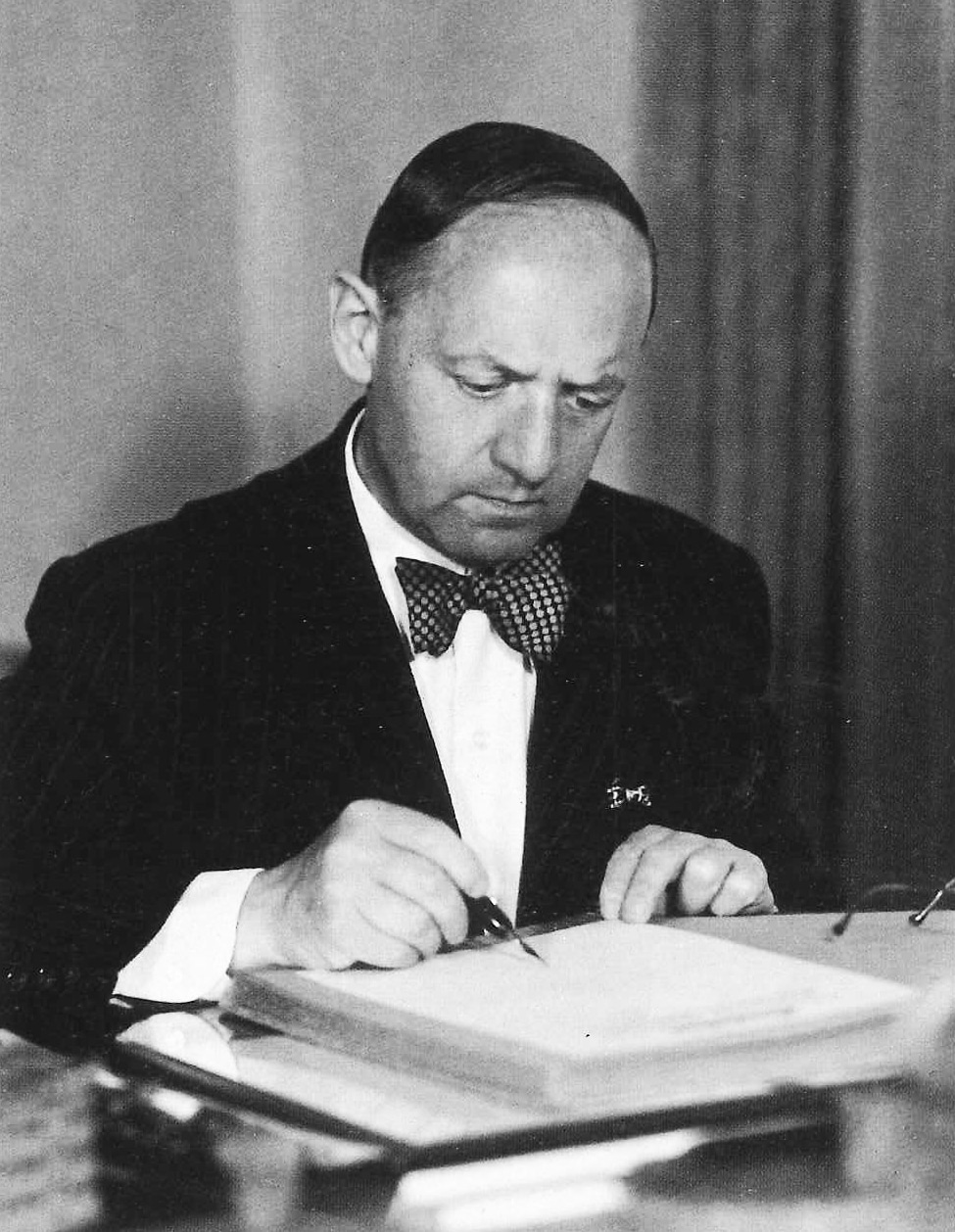
Otto Georg Königer
Ende 19. Jahrhundert
- 1890 to 1910 is considered a peak in the art of tailoring
- Starting in England, practical ladies’ fashion prevails and the tailored costume comes on
- Michael Müller, master tailor and cutting expert, introduces a decisive turning point in the cutting with his newly researched cutting method: a construction system for exact cutting
- In order to pass on this cutting system, the year 1891 marks the foundation of the cutting school »Deutsche Bekleidungs-Akademie« in Munich
- 1894: Affiliation of a journal with fashion pictures called »The elegant men’s fashion«
- The »System Müller« also known as »System of the Future«is the most successful cutting system at the turn of the century: No other system has such a precise geometric layout which divides the physique into lines of emphasis and transmits the curves to different positions in the width and length. It therefore becomes an important addition to the tailoring industry and has remained valid in its principles ever since.
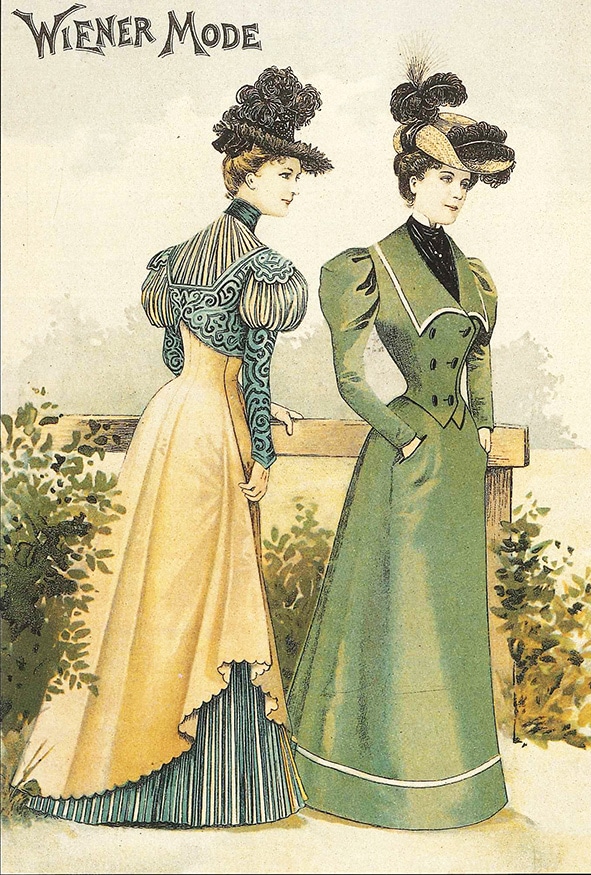
Wiener Mode (Vienna Fashion), 1890-1910
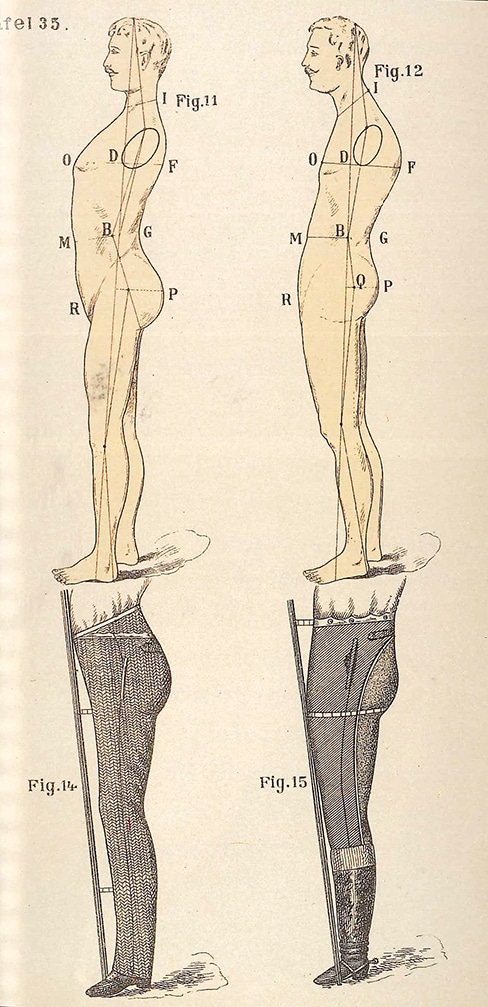
Size and Fit Optimization according to M.Müller
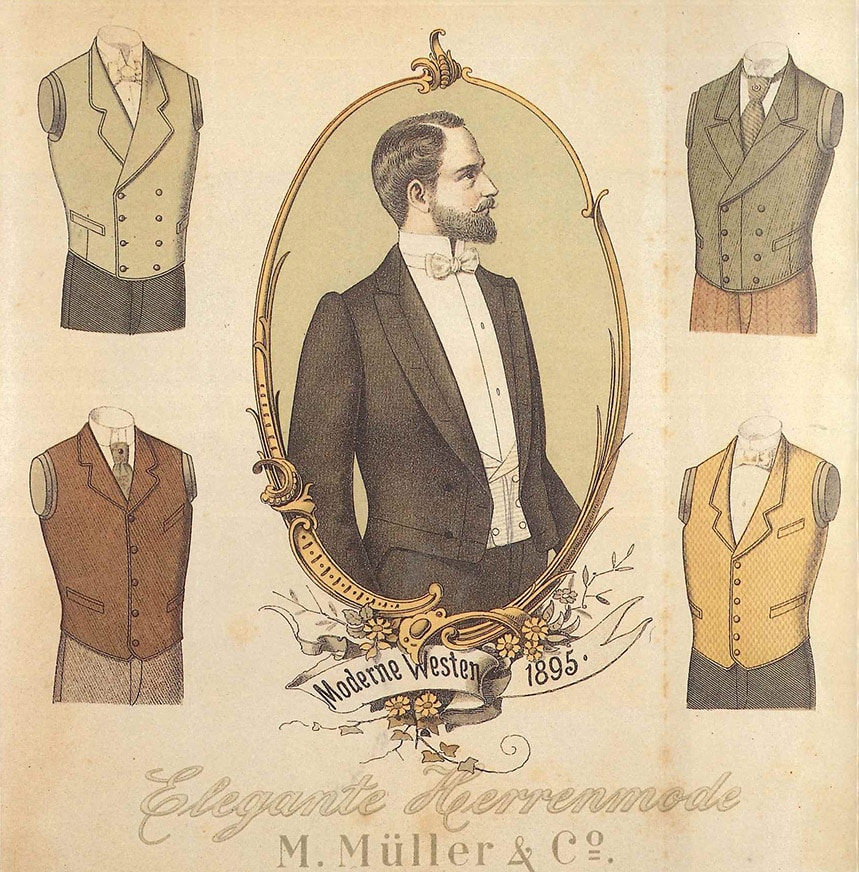
Modern vests, 1895
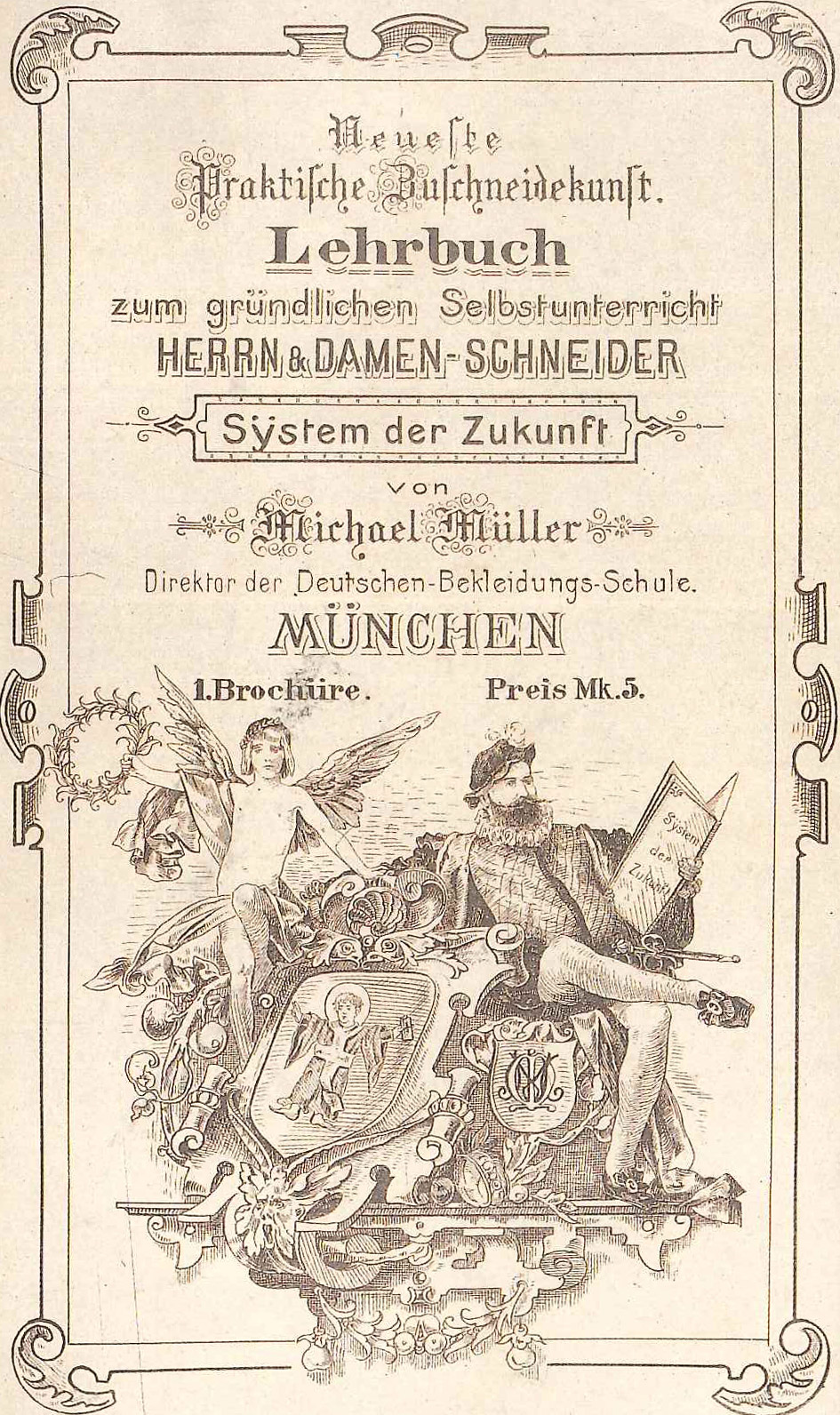
First ever published book by M. Müller
Second half of the 19th Century
- Men’s clothing becomes more and more of a »work suit«
- Women’s fashion is experiencing a second »rococo« and »neo-baroque«
- Origin and emergence of haute couture
Mid 19th Century
- Paper models, so-called »Hergöttle«, hang on the walls of tailor shops. The models allow a rough cut to be generously dimensioned – the fine tuning must be accomplished by the tailor during the fittings.
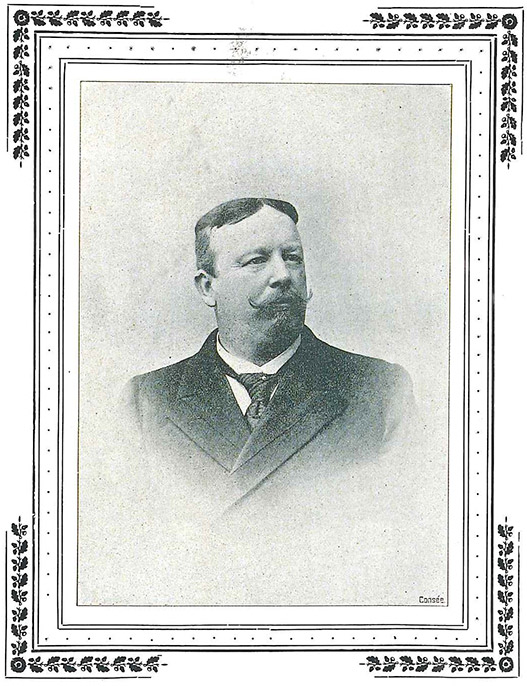
Michael Müller


